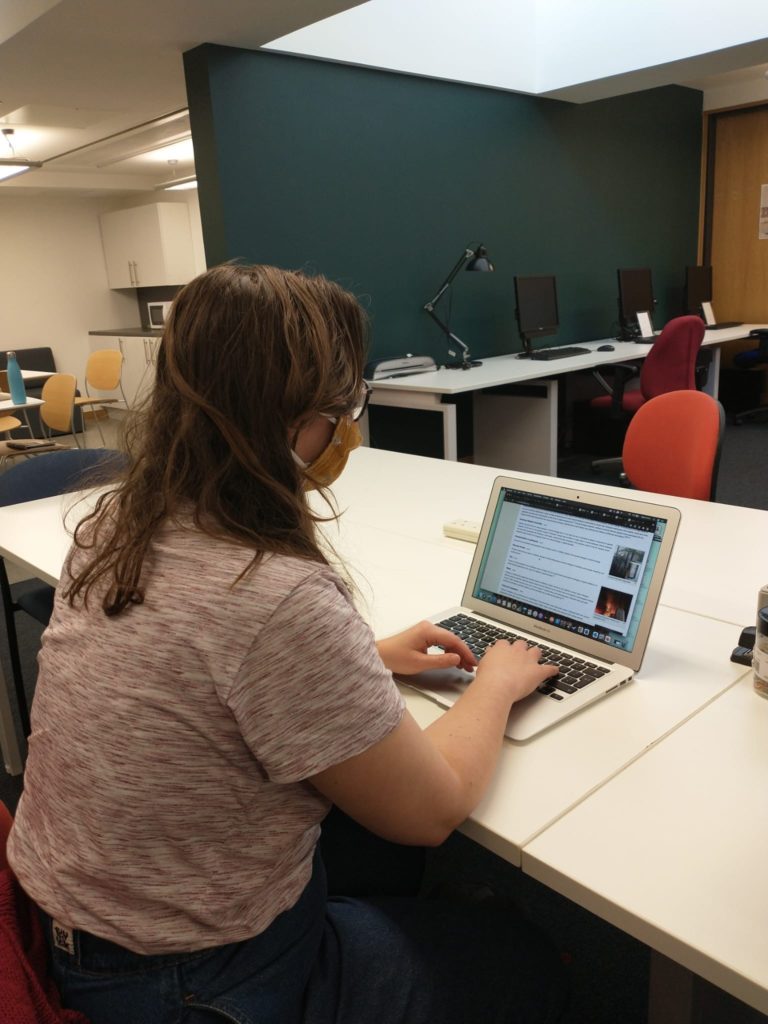
by Kirstin Ingram, second year student, MPhil Textile Conservation.
During the United Nations Climate Change Conference UK 2021 (COP26), politicians, participants, and protesters descended on Glasgow to join the discussion of climate change and sustainability. The Conference of the Parties (COP) is the supreme decision making body of the United Nations Framework Convention on Climate Change (UNFCCC) and was here to progress its objective to stabilize greenhouse gas concentrations “at a level that would prevent dangerous anthropogenic (human induced) interference with the climate system.”
During the conference, students on the MPhil Textile Conservation programme at the Kelvin Centre for Conservation and Cultural Heritage Research were invited to join a global 24 hour edit-a-thon on Wikipedia organised by the International Institute for Conservation of Historic and Artist Work (IIC). The purpose of an edit-a-thon is to add and edit information on a particular subject, so knowledge is more accessible to the public. Universities and training institutions involved in conservation across the globe were invited by IIC to join the edit-a-thon, adding information focusing on cultural heritage conservation sustainability and climate action themes. As climate change affects historic and artistic collections from changes to temperature and humidity, to the extreme of flash floods and fires, the need to reduce climate change is critical to conservators attempting to safeguard collections in ever changing conditions. These issues are powerfully brought together in an IIC film for the conference highlighting the response of conservators to climate emergencies: Nothing is Stable: Conserving Cultural Heritage in a Changing World.
As sustainability is a topic that is often discussed during our theory and practical sessions on the programme, we were keen to join in and contribute our knowledge on the subject. In the weeks running up to the event we learned how to join Wikipedia and edit pages, so we were ready to join the edit-a-thon when it went live. Articles to edit were suggested to us by IIC, such as Museum Environments, Sustainable materials use and disposal (conservation of cultural heritage), and Disaster Preparedness (cultural property).
When our time came to edit, some of us joined in a study space to edit together and share our ideas and knowledge of information to add. We discussed the suggested topics and added information on common pests in collections, salvage planning, hazardous materials, and more. We also undertook proof reading and added additional references to information by previous editors. According to IIC, altogether over the 24 hour period there were over 50 editors who added over 32,00 words in multiple languages and translations. While we were typing away during the edit-a-thon, former CTC student Marina Herriges was live at COP26’s Green Zone coordinating the IIC COP26 Edit-a-thon as well as explaining a bit more what conservators and IIC have been doing together to tackle climate change to the delegates. COP26 and the edit-a-thon was a great opportunity for us to discuss and increase our knowledge on the ways that conservators can help reduce climate change, connect with conservators around the globe, and share our knowledge of conservation with the public.





